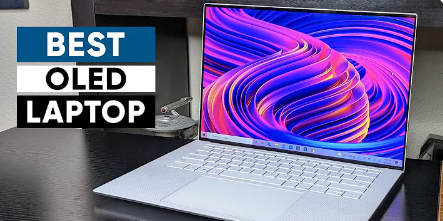Just a year ago, there weren’t too many laptops that offered OLED displays. And the ones that did offer would often cost a fortune. That’s because OLED screens were notoriously buggy, and their high manufacturing cost often outweighed their advantages.
But thanks to new innovations in display technology, more and more laptops are featuring OLED screens, and the price is also going down.

OLED laptops are still rare
Though OLED and AMOLED panels are widely used in smartphones and TVs, we don’t see many laptops featuring OLED displays. There are a few reasons for that, of course. OLED technology isn’t as mature as LCDs, it’s been only a few years since OLED laptops have hit the market. They were costly to manufacture and susceptible to problems like burn-ins.
Susceptible to burn-ins
The Biggest reason we don’t see many OLED laptops is because of the problem of burn-ins. A burn-in is basically the retention of colors by specific pixels. This happens in OLED if the same pixel is kept unchanged for long periods of time.
On laptops, this can be a big issue. Because there are many static UI components in Windows (e.g: the taskbar). Besides that, most PC games show HUDs and other static elements on the screen, which may cause burn-ins.
But thanks to new innovations, modern OLED laptops are less prone to burn-in. And nowadays, many OLED laptops come with a No Burn-in guarantee.
High Battery use in white backgrounds
Another problem with OLED screens is that they burn a lot of power in white backgrounds. On smartphones, it’s negligible because the screen is too small to drain too much power.
But laptops have much bigger screens and on white backgrounds, they can suck power at an incredible rate. This is solvable though, by using dark themes everywhere.
OLED technology has matured a lot
OLED (Organic Light Emitting Diode) displays are great. They are brighter than LCDs, with accurate colors and a higher contrast ratio. Their high contrast and fast response time make them excellent choices for watching movies in HDR. They also have fewer layers, so laptops featuring them tend to be slimmer.
Related: Best Laptops for Watching Movies and Netflix in 2023.
Higher contrast
Since individual pixels of OLED displays emit their own light individually, they can show pure blacks. On LCDs, a pixel is illuminated by the backlight even when it’s black. On OLEDs, when you need a black pixel, that individual LED is simply turned off. This results in an incredible 1,000,000:1 contrast ratio and delivers extremely clear and crisp images, even in dark scenes.
More colors
An OLED screen produces primary colors by running electricity through organic compounds that emit lights. This enables more accurate colors and higher levels of saturation than LCDs.
Superior Viewing angle
OLED displays also offer a better viewing angle compared to IPS and TN displays. This is useful when you’re watching movies or Netflix with friends. Most OLED screens can be viewed with minimal luminance loss at up to 80 degrees.
Perfect for watching HDR content
OLED displays have a native wide-color gamut which is necessary for decent HDR viewing. While the Quality of HDR content on Windows depends on a lot of factors other than the display, OLEDs are far better than LCDs in this regard.
Still way to go
OLEDs, compared to LCDs, are still in their early days. But it is undoubtedly the future of display technology. In the next couple of years, it is possible to see OLEDs replacing IPS and TN panels altogether. But to do so, their current shortcomings must be overcome first.

